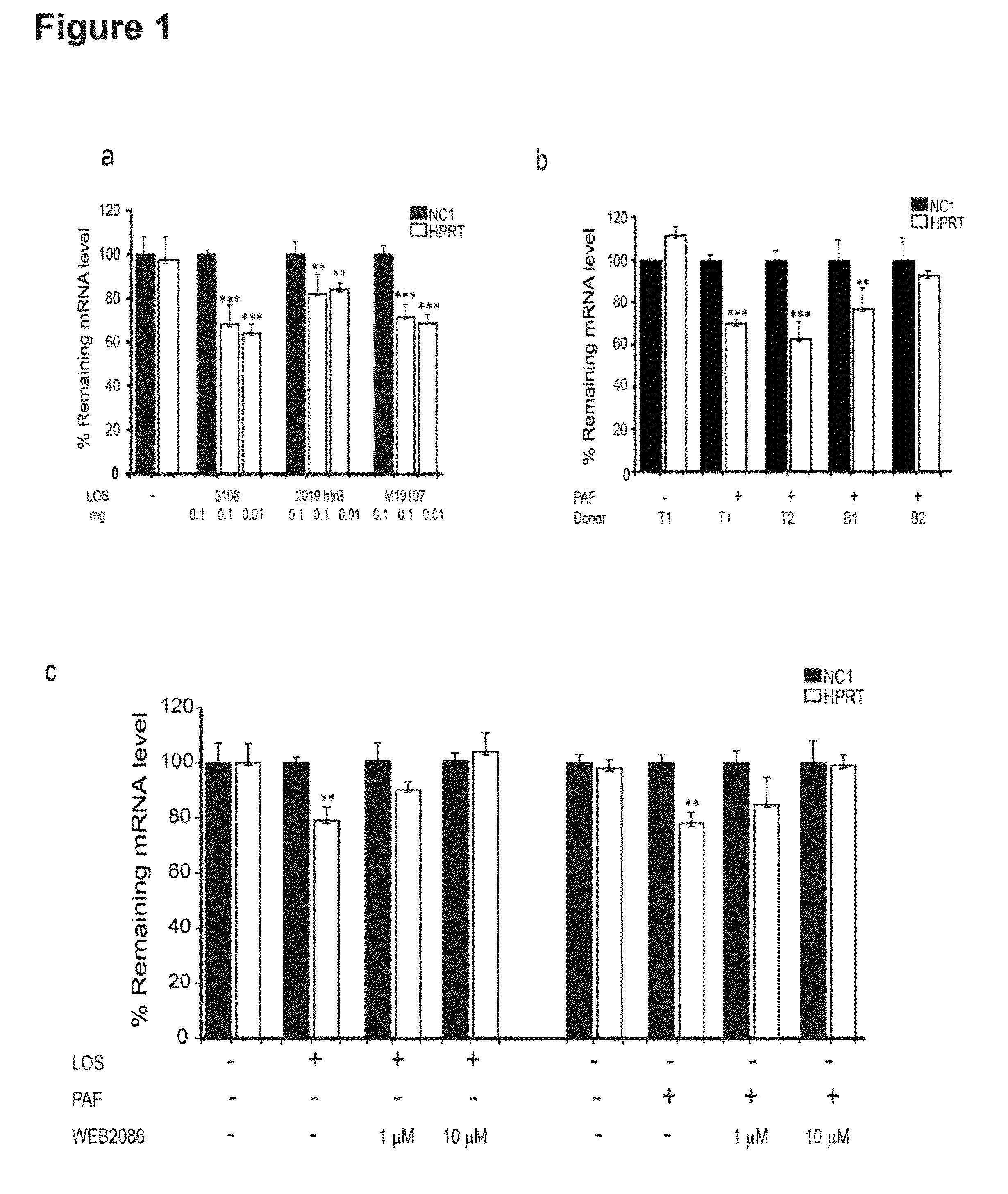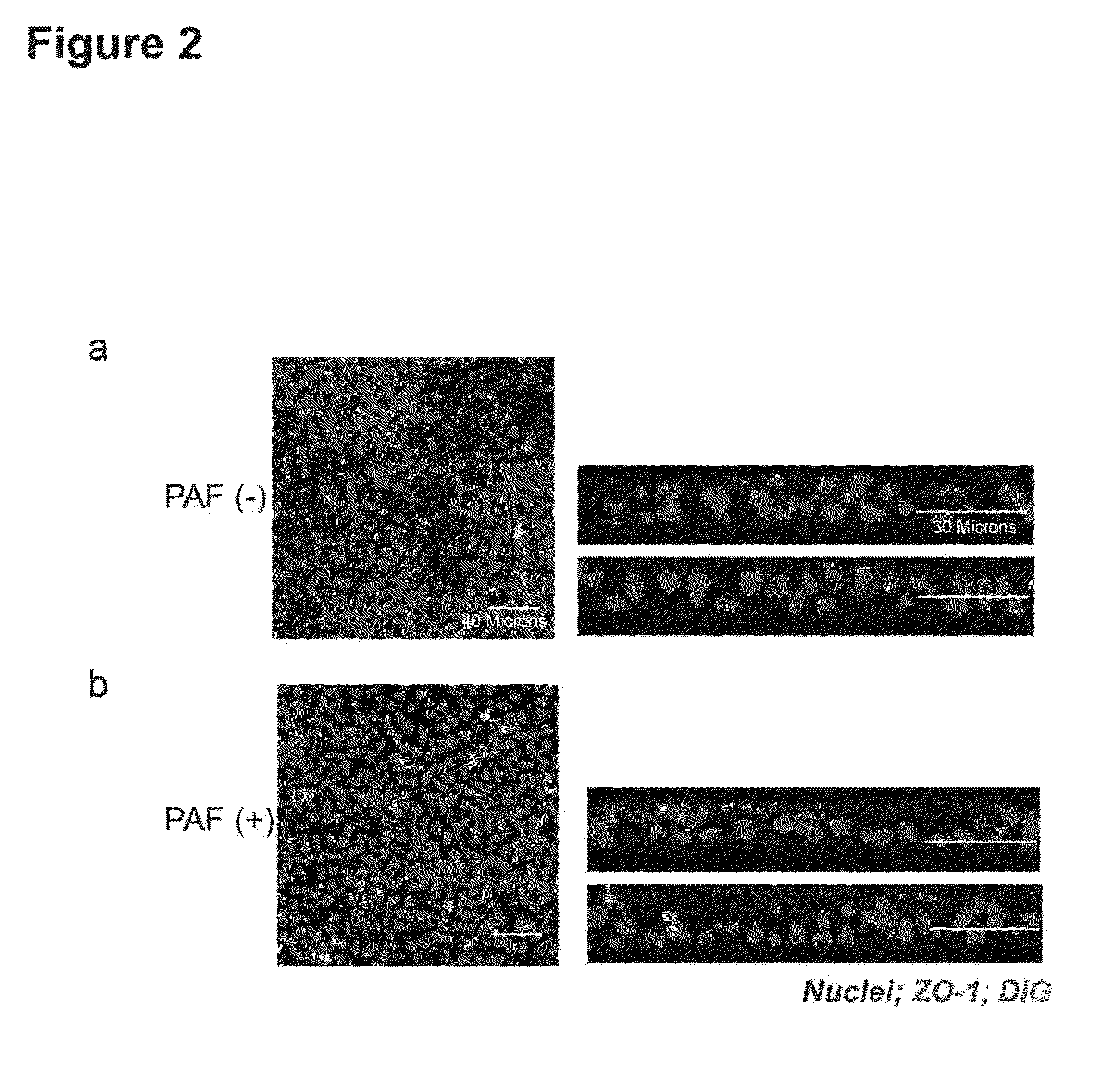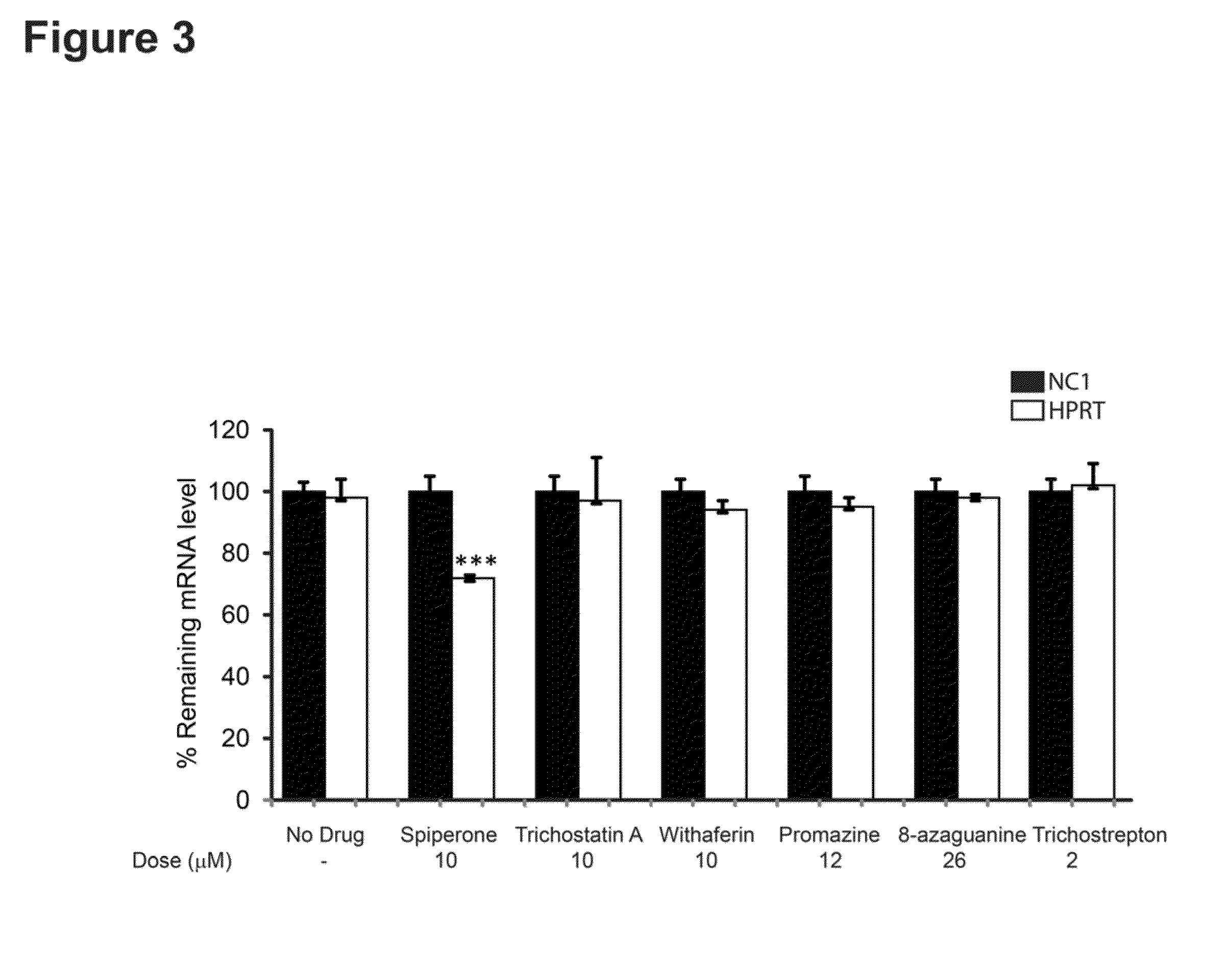Methods of improving rnai in well-differentiated airway epithelia
a well-differentiated, airway epithelia technology, applied in the direction of organic active ingredients, biochemistry apparatus and processes, antibody medical ingredients, etc., can solve the problems of affecting the production of this fluid, progressive disability and often early death, and difficulty breathing, so as to reduce the mrna the effect of reducing the level of the target mrna
- Summary
- Abstract
- Description
- Claims
- Application Information
AI Technical Summary
Benefits of technology
Problems solved by technology
Method used
Image
Examples
example 1
[0112]Well-differentiated human airway epithelia (HAE) present formidable barriers to efficient siRNA delivery. We previously reported that treatment of airway epithelia with specific small molecules improves oligonucleotide uptake and facilitates RNAi responses. Here, we exploited the platelet activating factor receptor (PAFR) pathway, utilized by specific bacteria to transcytose into epithelia, as a trigger for internalization of Dicer-substrate siRNAs (DsiRNA). PAFR is a G-protein coupled receptor which can be engaged and activated by phosphorylcholine residues on the lipooligosaccharide of non-typeable Haemophilus influenzae (NTHi) and the teichoic acid of Streptococcus pneumoniae as well as by its natural ligand, platelet activating factor (PAF). When well-differentiated airway epithelia were simultaneously treated with either NTHi lipooligosaccharide or PAF and transduced with DsiRNA formulated with the peptide Transductin, we observed silencing of both endogenous and exogenou...
PUM
| Property | Measurement | Unit |
|---|---|---|
| temperatures | aaaaa | aaaaa |
| pH | aaaaa | aaaaa |
| volume | aaaaa | aaaaa |
Abstract
Description
Claims
Application Information
 Login to View More
Login to View More - R&D
- Intellectual Property
- Life Sciences
- Materials
- Tech Scout
- Unparalleled Data Quality
- Higher Quality Content
- 60% Fewer Hallucinations
Browse by: Latest US Patents, China's latest patents, Technical Efficacy Thesaurus, Application Domain, Technology Topic, Popular Technical Reports.
© 2025 PatSnap. All rights reserved.Legal|Privacy policy|Modern Slavery Act Transparency Statement|Sitemap|About US| Contact US: help@patsnap.com



